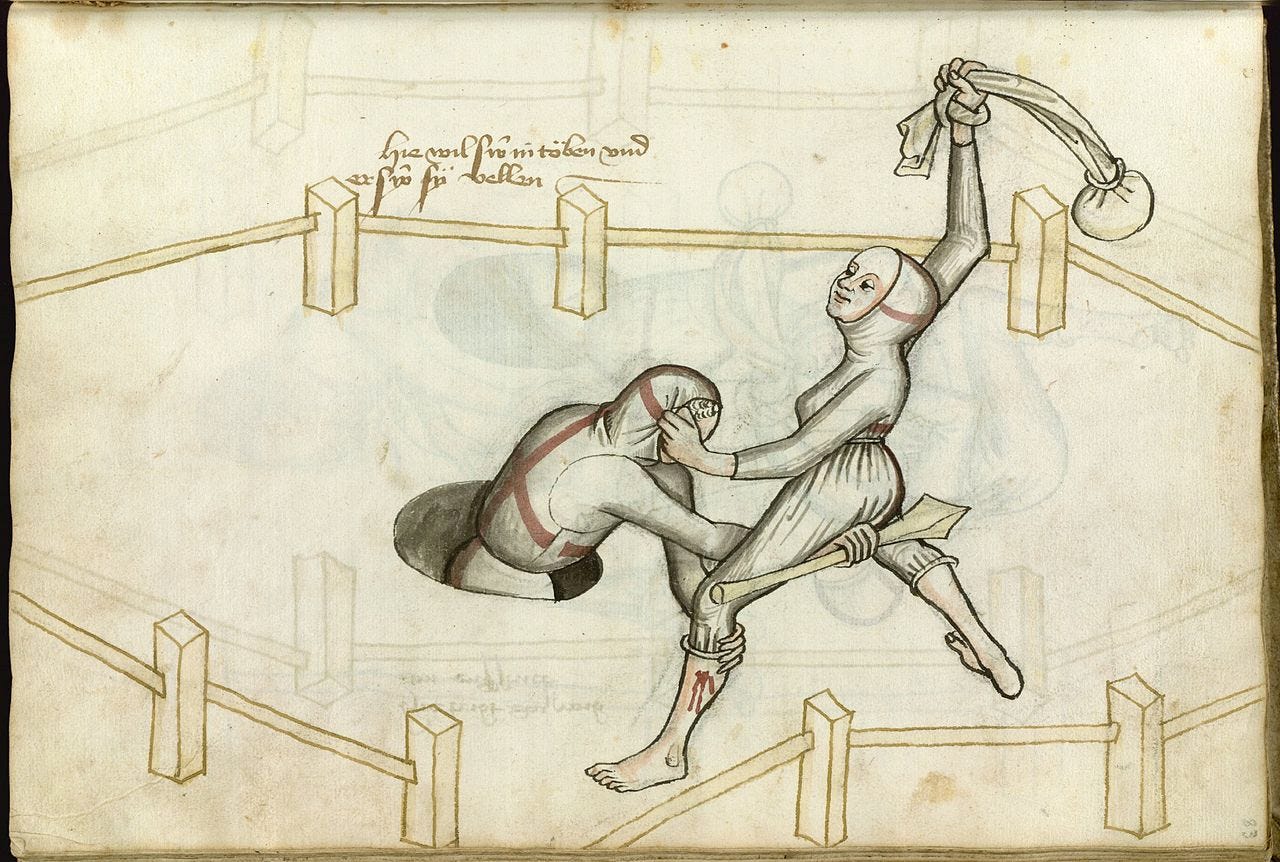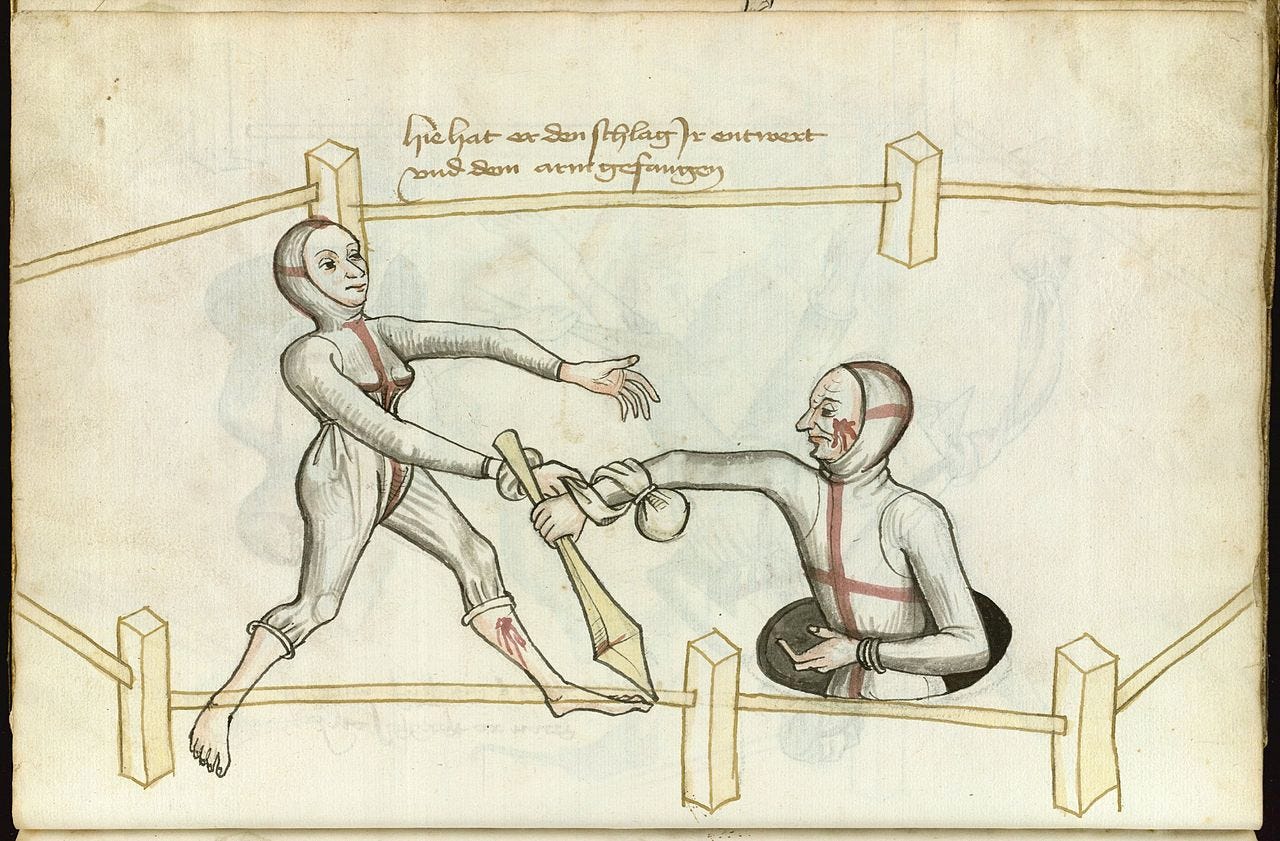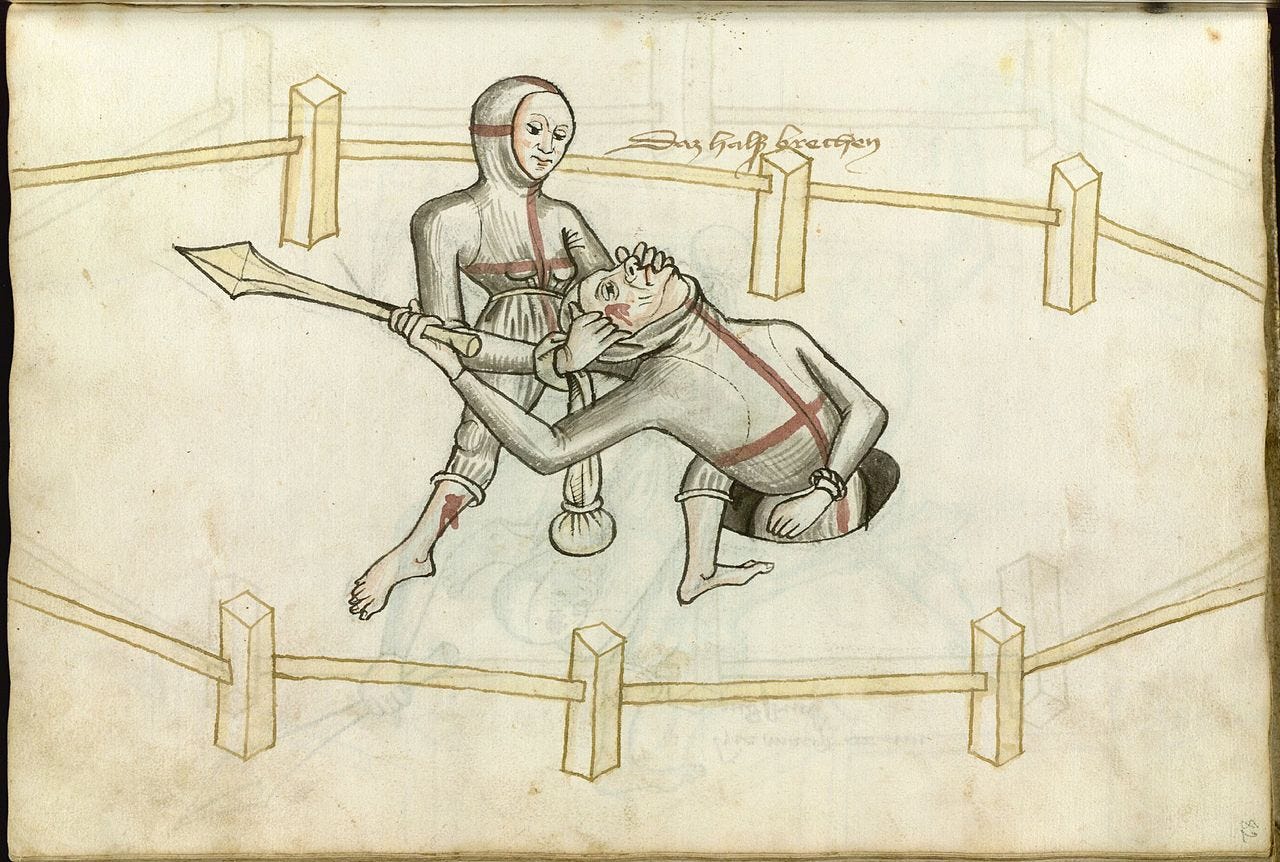
Divorce by combat appears to have been a form of trial by combat. Trial by combat was part of Germanic law that dealt with accusations between two parties where there were no witnesses or a confession. Whoever won the duel was deemed to be right. It was essentially a legally-sanctioned duel.
These illustrations for a divorce by combat come from Hans Talhoffer’s Fechtbuch, (Fencing Book) which was written in 1467. The book serves as an instruction manual for how duels should be fought. They were interpreted in Trial By Combat between a Man and a Woman by Professor Kenneth L. Hodges / University of Oklahoma
The man was placed in a waist-height 3-foot deep hole, with one hand tied behind his back while the woman was allowed to move freely. Both parties wore practical clothes, a one-piece bodysuit with stirrup legs.
The woman was armed with three rocks, each wrapped in a length of cloth to form a kind of swinging club. The man was given three normal clubs. His clubs matched the length of the woman’s cloth to ensure that their ranges were equal.
The man was not allowed to leave his hole, placing the man at a clear disadvantage. But it’s unlikely that the woman had had any kind of combat training. Furthermore, in any kind of physical contest, it is likely the male would have an advantage in size and strength. So the handicaps placed upon the man were to try and make the fight as fair as possible.
The conditions for victory are unclear. Some historians believe it was unlikely that fights were to the death. Instead, it was probably down to the judges to decide when one of the fighters had been incapacitated.
Historians have also suggested from Talhoffer’s drawings that there were alternative ways to win, such as if the woman managed to drag the man from his hole, or if he managed to drag the woman in. There is also the possibility that many of these duels eventually descended into wrestling matches, where the duels could be won by managing to pin the other party.
There is some evidence that these duels may have usually ended in a death, even if it wasn’t at the hand of the combatants. If the man lost, he would be taken from his hole and executed in the town square. If the woman lost, she would be placed in a hole and buried alive. ~ Ancient Origins
View pages from Hans Talhoffer’s Fechtbuch
For more info see Trial By Combat between a Man and a Woman by Professor Kenneth L. Hodges / University of Oklahoma









No comment
Nowhere in the original source does it say anything about this fight being about divorce. These where trials by combat. There is no evidence for a divorce being settled by combat. Also this book is not a law book stating that this was how this fight would be fought, just advice on how to fight if in such a situation.
Nowhere in the original source does it say anything about being executed if one was the loser of such a combat.